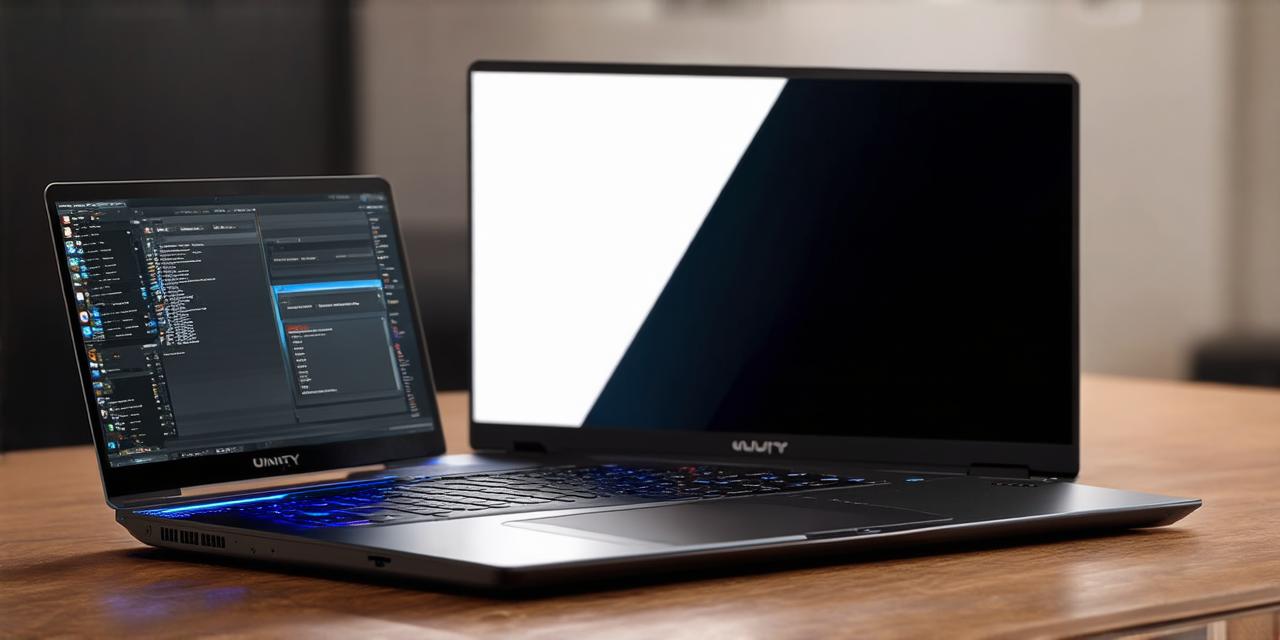As Unity 3D becomes increasingly popular for game development, many developers are turning to laptops as their primary tool. However, the performance of Unity on laptops can vary greatly depending on a number of factors, including hardware specifications and software configurations. In this article, we will explore some common issues that developers may encounter when working with Unity on laptops, and offer some tips for optimizing performance.
Hardware Requirements
Before we dive into the specifics of optimizing Unity performance on laptops, it’s important to understand what hardware is required to run Unity at all. While Unity can be run on almost any computer, it requires a certain amount of processing power and memory to function smoothly. Here are some general guidelines:
- Processing power: A quad-core processor or better is recommended for smooth performance.
- Memory: At least 8GB of RAM is recommended for most Unity projects.
- Graphics card: An integrated graphics card (such as Intel HD or AMD Radeon) will suffice for simple projects, but a dedicated graphics card (such as NVIDIA or AMD) is highly recommended for more complex projects.
It’s also worth noting that the specific requirements of your project will depend on factors such as the complexity of your graphics and the number of objects in your scene. If you’re planning to create a large-scale game with intricate graphics, you may need even more powerful hardware.
Software Configurations
In addition to hardware requirements, there are several software configurations that can affect Unity performance on laptops. Here are some tips for optimizing these settings:
- Graphics driver updates: Make sure your graphics card driver is up-to-date. This will ensure that you’re using the latest optimization features and bug fixes.
- Virtual memory settings: Adjust your virtual memory settings to allocate more RAM to Unity. This can be done in the Windows Control Panel or through the Unity editor settings.
- Anti-virus software: Some anti-virus software can interfere with Unity performance by scanning files in real-time. Consider disabling these scans or adjusting your anti-virus settings to exclude Unity files.
- Browser extensions: Certain browser extensions (such as ad blockers) can slow down your laptop’s performance. Disable any unnecessary extensions and try closing multiple browser tabs to free up resources.
Optimizing Unity Projects
While hardware and software configurations are important factors, there are also steps you can take to optimize your Unity projects for better performance on laptops. Here are some tips:
- Reduce draw calls: Draw calls are the process by which Unity renders graphics on your screen. Reducing the number of draw calls in your scene can greatly improve performance. This can be done by using simpler models, reducing the number of objects in your scene, and using LOD (level of detail) techniques.
- Optimize textures: Large textures can slow down Unity’s rendering process. Use compressed textures wherever possible, and reduce the size of non-critical textures.
- Enable profiling: Unity’s built-in profiling tools can help you identify performance bottlenecks in your project. Use these tools to optimize your code and identify areas where you can improve performance.
- Reduce particle effects: Particle effects (such as explosions and smoke) can be very resource-intensive. Consider reducing the number of particles in your scene, or using simpler effects instead.
Summary
Unity 3D performance on laptops can vary greatly depending on a number of factors. By understanding hardware requirements, optimizing software configurations, and taking steps to optimize your Unity projects, you can improve performance and ensure a smooth development experience. Remember to always test your projects on multiple devices to ensure that they run smoothly across all platforms.
